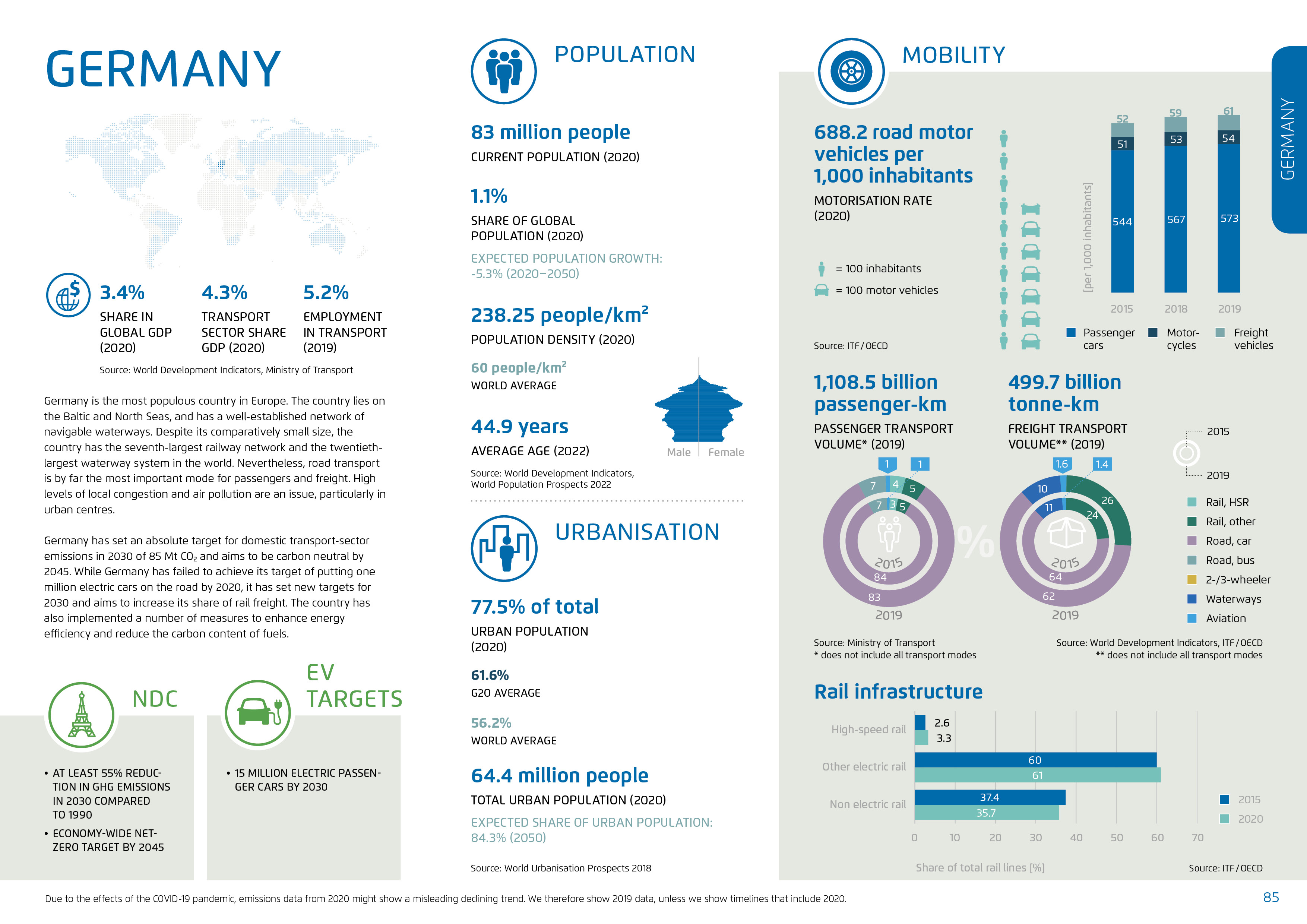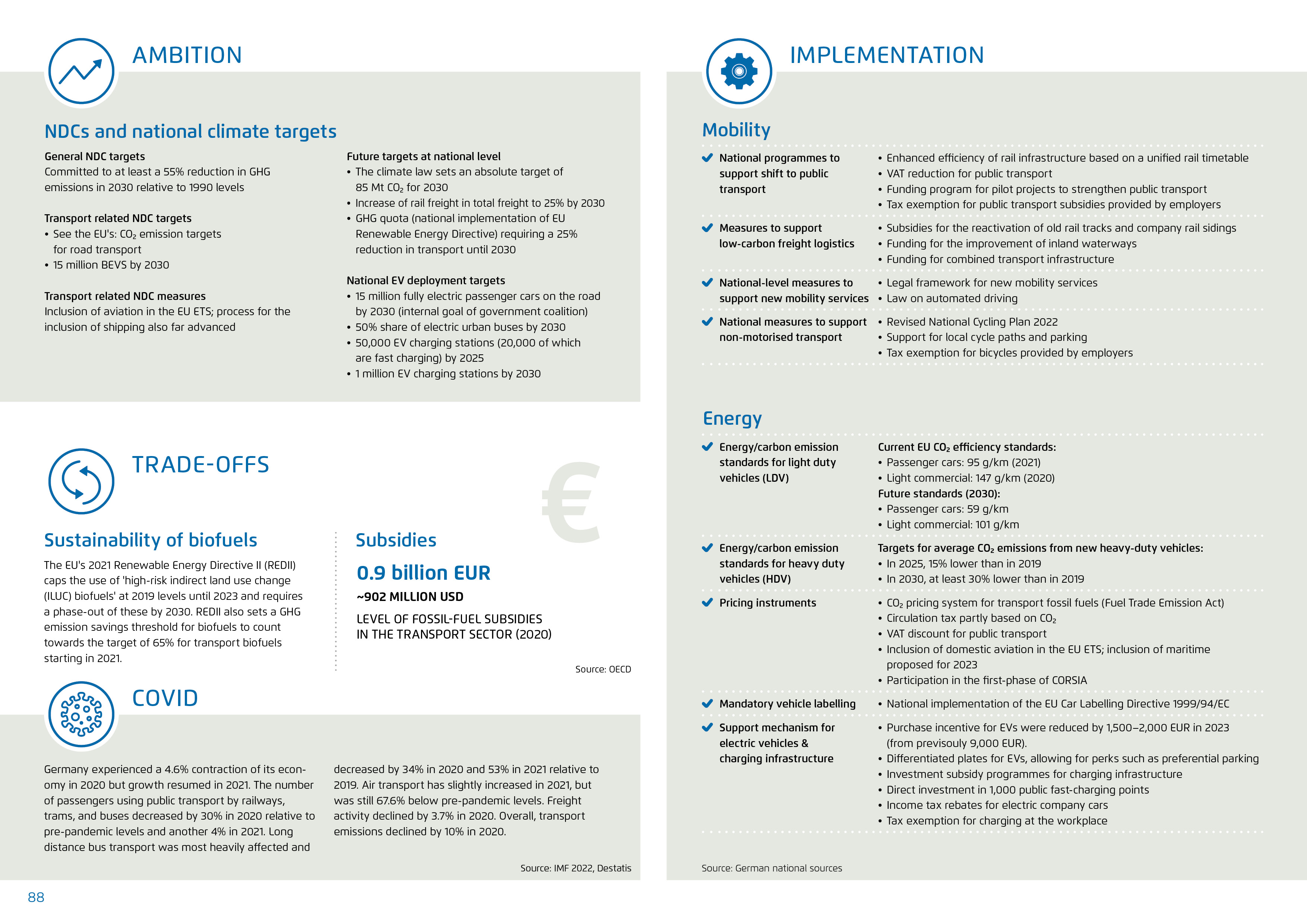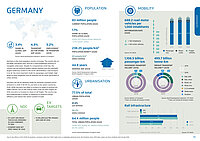This content is also available in: German
Germany
Net-zero target: 2045 / Motorisation rate (2020): 688.2 vehicles per 1,000 inhabitants / Change in transport sector emissions (1990-2019): -2,1 % / Projected total CO2 emissions per capita in the transport sector in 2030: 1,84 t
Germany is the most populous country in Europe. The country lies onthe Baltic and North Seas, and has a well-established network of navigable waterways. Despite its comparatively small size, the country has the seventh-largest railway network and the twentieth-largest waterway system in the world. Nevertheless, road transportis by far the most important mode for passengers and freight. High levels of local congestion and air pollution are an issue, particularly in urban centres.
Germany has set an absolute target for domestic transport-sector emissions in 2030 of 85 Mt CO₂ and aims to be carbon neutral by 2045. While Germany has failed to achieve its target of putting one million electric cars on the road by 2020, it has set new targets for 2030 and aims to increase its share of rail freight. The country has also implemented a number of measures to enhance energy efficiency and reduce the carbon content of fuels.
Key figures on transport and climate
Published in Towards Decarbonizing Transport 2023.








